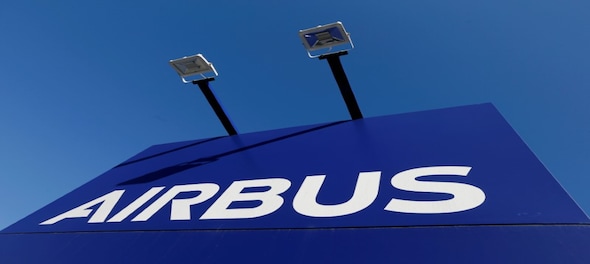
At the biennial Paris Airshow that began on Monday, Airbus finally unveiled the A321XLR, an airplane which was long speculated for launch, but was a toss-up between the company and rival Boeing about which would go for it first.
Boeing has been for a while assessing the launch business case for the aircraft which may eventually be called the 797. It would have to be a clean sheet design, and would take years of development, but to commit to it, the airline needs to know if there is a business case for it. There are many Boeing 757 and 767 customers that could buy it.
 The 737 MAX after all, anyways flies a fair bit at 3,600 nm. The 757-200 used to fly about 3900 nautical miles, which was introduced in the early '80s, and is coming to the end of its lifecycle soon.
The 737 MAX after all, anyways flies a fair bit at 3,600 nm. The 757-200 used to fly about 3900 nautical miles, which was introduced in the early '80s, and is coming to the end of its lifecycle soon.Single-Aisle Flying, Anyone?
Airbus, on the other hand, is already taking on big leaps in the segment of flying further on the single aisle. The A321neo and its variants could already fly about 4,000 nautical miles on the single aisle aircraft, making possible flights such as between Delhi and Istanbul on a full aircraft with all-economy seating.
With the launch of the Airbus A321XLR, Airbus has taken it a notch higher. The aircraft, which will be delivered in 2023, can fly 4,700 nautical miles with a Maximum Takeoff Weight of 101 tonnes. That means it opens up a whole lot of markets on routes which require 9 hours of flying, and earlier used to have the need of flying a widebody aircraft.
For instance, take India to Europe, which is operated by the Boeing 787 by Air India and was operated by a mix of the Boeing 777/Airbus 330 by Jet Airways, can largely be flown with an A321XLR (the range is for a two-cabin configuration, so a bit lesser in a single cabin configuration, perhaps).
Airlines around the world have queued up for the Airbus A321XLR, with orders coming in thick and fast. It is impressive to see that Airbus has the backing of airlines and lessors even before the plane has come to being. Air Lingus, Iberia, Frontier, Wizz Air, JetSMART, Qantas, Flynas, Saudi Arabian Airlines, JetBlue, Cebu Pacific, and perhaps even more coming up on Friday.
Amongst all of these, there are airlines of all nature and shapes and sizes, there are no-frills and network airlines, there are low-cost carriers and full-service airlines in the mix. So why are airlines falling over each other to buy just another single aisle aircraft?
The Long and Narrow Of It
The gap that the A321XLR fills is, that it enables your airlines to fly a long-range route, with a narrow-body aircraft, i.e., a smaller number of passengers. The Boeing 787 was designed with this mission in mind, but the A321XLR works in another way that it undercuts even the 787s. The same pilots who can fly, for instance, the Mumbai - Bangalore flight on an A320neo can also fly a Mumbai - London on an A321XLR. And with the XLR, they can worry about just having to fill in 200-210 passengers on the plane rather than the 250-270 on the 787.
This market is the Middle of the Market, where airlines are just about flying for 7-9 hours so it starts to border on to the definition of a long-haul flight. Remember, there is no conventional definition I know of, but anything up to three hours flying (Mumbai - Delhi/Kolkata) is short haul for me and 3-5 hours (Delhi - Phuket) is medium haul more or less.
The Boeing 757, which was launched in 1983 to customers, and the last one produced in 2004, used to serve this market. But as you can imagine, airlines have tonnes of these old aircraft which no longer work on the fuel efficiency bit and are anyways coming to the end of their life, and needs to be replaced.
With Boeing's current issues with the MAX, all their focus is going on fixing up the 737 issues, which means they are not committing to the NMA project at the moment, allowing Airbus to take away the orders right now, and hence, even make it worse for Boeing to consider the project later (already about 150 such orders have landed in the lap of Airbus).
What's more, the economics work better for the airlines. As per Airbus, an aircraft could do an 8-hour round trip a day and still squeeze in a short haul flight on the same plane. Let's say, they could fly from India to Europe, sit on the ground for two hours, fly back to India, that is still 8 hours left in the day.
So the aircraft could get cleaned up and do a quick Mumbai-Delhi and back on the same aircraft as well. These kind of missions, as flight lengths are called in aviation parlance, are not possible with wide body (double aisle) aircraft because those small flights are too short for them, and you still need about 85-90 percent occupancy to be able to make any money on the flight. So routes that might be break-even or loss-making with a widebody have the potential to be profitable with a narrowbody.
For the passengers, however, this will work two ways. The positive is they can now hope to board their flights from their own home airport rather than having to transit to Mumbai or Delhi or another metro airport for their flight. On the other hand, imagine waiting for your turn on a 9-hour flight with just three lavatories on board and 200 passengers. Let us hope there is adequate public space and galleys that are built into these rather than the new space-saving options.
So why have the orders not rolled in from IndiGo of India yet? The only reason I can think of, is that the aircraft will be first available in 2023. And the airline needs them in the next few months to be able to realise their ambition to fly to Europe.
Ajay Awtaney is a business travel & aviation journalist based in Mumbai, and the founder of the Indian frequent-traveller website Live From A Lounge. Ajay flies over 200,000 miles every year, and tweets about The Business of Travel at @LiveFromALounge.
First Published: Jun 21, 2019 2:18 PM IST
Check out our in-depth Market Coverage, Business News & get real-time Stock Market Updates on CNBC-TV18. Also, Watch our channels CNBC-TV18, CNBC Awaaz and CNBC Bajar Live on-the-go!


Guna Lok Sabha Elections: Can Jyotiraditya Scindia, on BJP ticket, reclaim home turf?
May 7, 2024 8:51 AM
Bhopal Lok Sabha Elections 2024: BJP replaces sitting MP Pragya Thakur with Alok Sharma, Cong fields Arun Srivastava
May 7, 2024 8:23 AM

